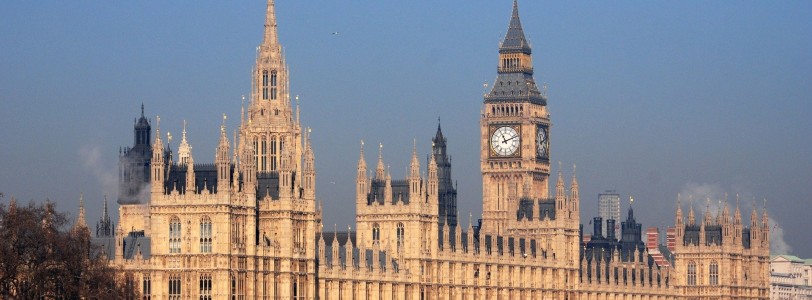On a drizzly January morning, I queued at the visitors’ entrance of the Palace of Westminster and met my tour group and guide. The free guided tour is easy to book – simply email the bookings team on the Houses of Parliament website. The tour is specifically to allow UK citizens to view their democracy in action, and is a separate scheme to the paid tours for foreign tourists. A helpful tip to beat the crowds is to book an early morning slot, as you can then smugly walk around with a smaller group, asking the guide as many questions as you like!
We explored the House of Lords, the House of Commons, Central Lobby, St Stephen’s Hall and Westminster Hall. Our lively tour guide revealed every intimate detail of the iconic buildings. He pointed out the indents on the wooden desk in the House of Lords where Winston Churchill had banged his ring during impassioned war speeches. He recounted the history of the royal portraits in the Queen’s robing room where she dresses before parliamentary engagements. The guide was attentive to our questions and keen to share his knowledge. It’s no wonder that the tour of Parliament was awarded ‘Best Guided Tour’ at the Group Leisure & Travel Awards in 2019.
In addition to the tour, UK residents can even watch live debates in the public galleries for free. I took advantage of this and queued up for the first Prime Minister’s Questions (PMQ) of the year. This is a chance for MPs to hold the government and the Prime Minister accountable for their actions. Visitors all receive a timetable which gives an insight into the daily workings of parliamentary debates. It was interesting to watch Boris Johnson and Jeremy Corbyn discuss pertinent issues such as the Australian bushfires and the Westminster Bridge terrorist attack.
I would recommend checking out the debates if you are in London for the day. There’s no need to book and you can enter and leave the public gallery whenever you like.
Don’t be a stranger to politics
Parliament was not always as welcoming towards UK visitors, who were once known as ‘strangers’ and only permitted to enter by invitation. It was not until 2004 that the term ‘Strangers’ Gallery’ was replaced with ‘Public Gallery’ in a bid to encourage more people to visit.
For female visitors in particular, access to Parliament was historically restricted. Initially only a small number of well-connected women watched the House of Commons through a ventilation shaft in the ceiling. The Ladies' Gallery was then created in 1834 and consisted of a window barred with heavy metal grilles, continuing to limit women’s visibility in politics. As women continued to demand suffrage the pressure to allow women to participate in politics increased, and in 1917 the metal grilles were removed. A year later some women got the vote, and the first female MP was elected.
Thanks to the protesters, UK residents can all freely engage in watching live debates. Increasing accessibility allows more people to understand how their democracy works, and gives them the confidence to have a say in how the government is run. It seems vital to therefore encourage young people to exercise their democratic right to visit, and in turn have their voice heard. Today you can enter the Central Lobby and request to meet any MP to discuss and challenge them on issues that matter to you.
Rather than just another London tourist attraction, visitors ensure that Parliament remains a place of political engagement working with and for the people.









0 Comments